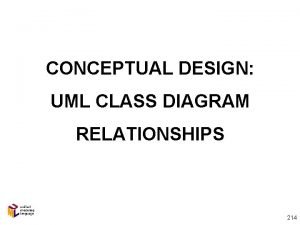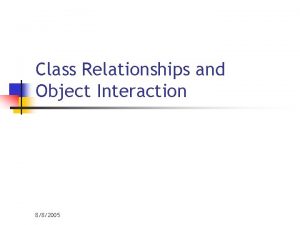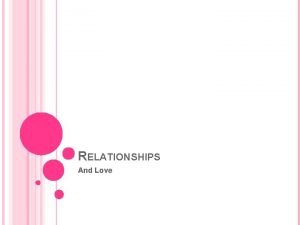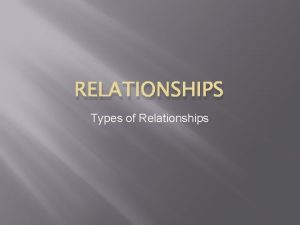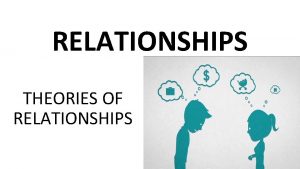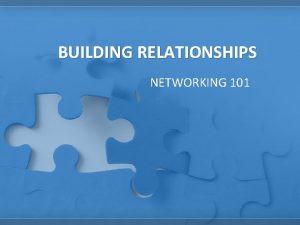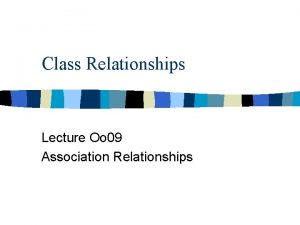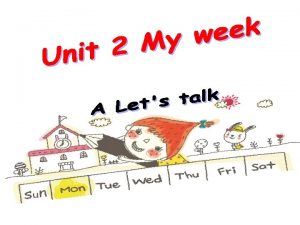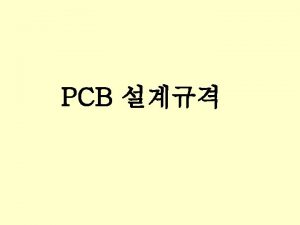Class Relationships Class Relationships n In systems with















- Slides: 15

Class Relationships

Class Relationships n In systems with multiple classes, it can become difficult to keep track of relationships q n e. g. the Student class requires the Course class to work There are many ways classes can interact q Details of the interactions are part of the design

Class Relationships n Three of the most common relationships: q Dependency: A uses B q Aggregation: A has-a B q Inheritance: A is-a B n Today: dependency and aggregation n Inheritance later

Dependency n It’s very common for one class to use another q q q n methods use a class to temporarily store/manipulate information an instance variable gets a new value by using another class arguments are passed of another class type … any case where a class needs another class to compile or run

Dependency n A dependency exists when one class relies on another in some way, usually by invoking the methods of the other n We don't want numerous or complex dependencies among classes q in general – we want to minimize dependencies n Nor do we want complex classes that don't depend on others n A good design strikes the right balance

Dependency n Some dependencies occur between objects of the same class n A method of the class may accept an object of the same class as a parameter n For example, the concat method of the String class takes as a parameter another String object str 3 = str 1. concat(str 2); n This drives home the idea that the service is being requested from a particular object

Dependency Example public class Coin { char face; \ ‘h’ for heads, ‘t’ for tails …… contstructors, methods, etc…… public void flip() { Random rg = new Random(); int rand = rg. next. Int(2); if(r==0) face = ‘h’; else face = ‘t’; } } ----- DEPENDENCY!

Aggregation n An aggregate is an object that is made up of other objects n Therefore aggregation is a has-a relationship q A bike has a two wheels n In software, an aggregate object contains references to other objects as instance data n The aggregate object is defined in part by the objects that make it up n This is a special kind of dependency – the aggregate usually relies on the objects that compose it

Aggregation Example public class Wheel { private int diameter; Wheel(int diameter) { this. diameter = diameter; } public int get. Diameter() { return diameter; } public int get. Circumference() { return Math. pi*diameter; } }

Aggregation Example public class Bike { private Wheel frontwheel; private Wheel backwheel; …. other instance variables…. Bike(int frontsize, int ibacksize) { this. frontwheel = new Wheel(frontsize); this. backwheel = new Wheel(backsize); } …. . other methods } -other methods may use wheel size… -for example to compute distance traveled -Note: A Bike cannot be created without Wheel objects

Graphical Representations n UML – Unified Modelling Language q q n general methods to model/design/document software and other structures commonly used to design object oriented systems The are several different types of UML diagrams q … including “class diagrams”

Class Diagrams n n Diagrams that are used to describe classes and class relationships Represents: q q classes: instance variables, methods (and relevant types and arguments) class relationships: dependency and aggregation…

Drawing a Class n n Some details occasionally omitted (for clarity) Not Java syntax – language independent

Class Relationships n n n Other arrows illustrate different relationships You should be able to read these It is up to you if you find them useful in your own designs

Design and UML n A full UML diagram gives a lot of information about the design q n Probably too detailed for initial planning q q n creating one requires very careful planning could be done for low-level design or documentation Often, details will change during implementation – but don’t plan it that way Our blackjack design isn’t finished yet….
 Decision support systems and intelligent systems
Decision support systems and intelligent systems Engineering elegant systems: theory of systems engineering
Engineering elegant systems: theory of systems engineering Embedded systems vs cyber physical systems
Embedded systems vs cyber physical systems Elegant systems
Elegant systems Class diagram relationships
Class diagram relationships Today's class answers
Today's class answers Package mypackage; class first { /* class body */ }
Package mypackage; class first { /* class body */ } Difference between abstract class and concrete class
Difference between abstract class and concrete class What is modal class
What is modal class Class i vs class ii mhc
Class i vs class ii mhc Abstract concrete class relationship
Abstract concrete class relationship Lower boundary formula
Lower boundary formula Stimulus
Stimulus Discriminative stimulus
Discriminative stimulus Therapeutic class and pharmacologic class
Therapeutic class and pharmacologic class Class maths student student1 class student string name
Class maths student student1 class student string name




